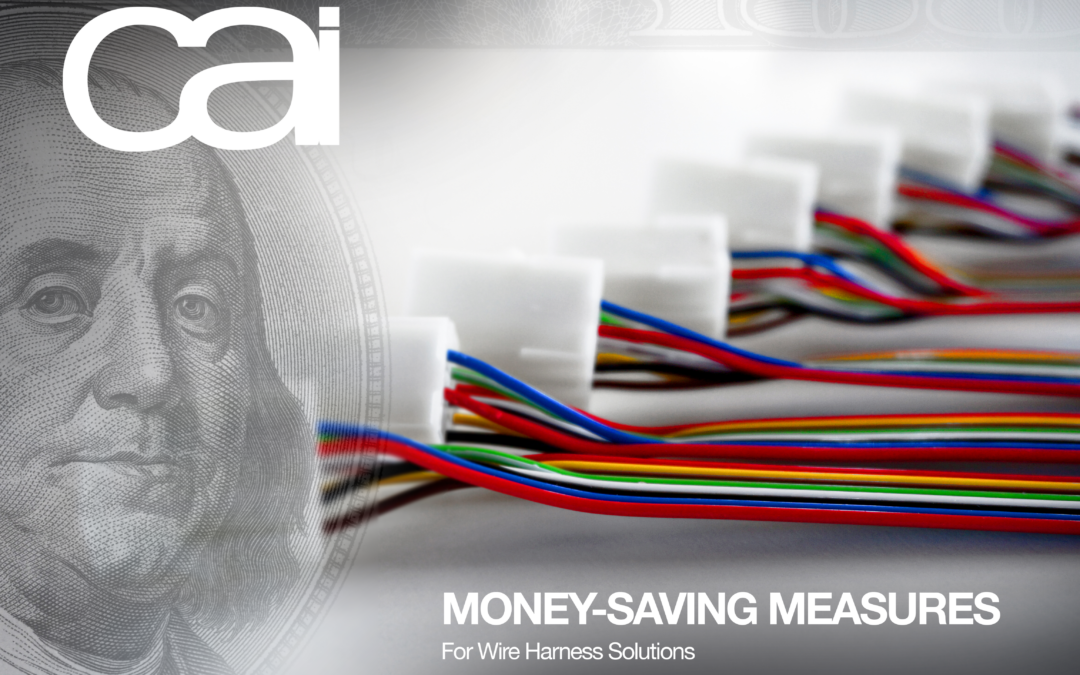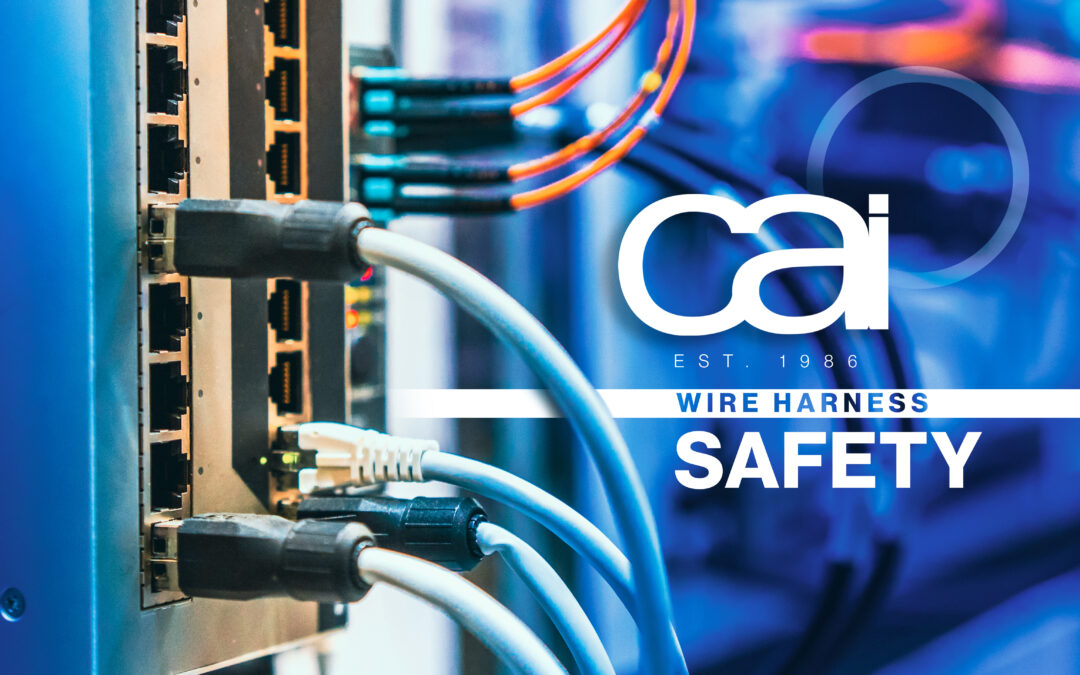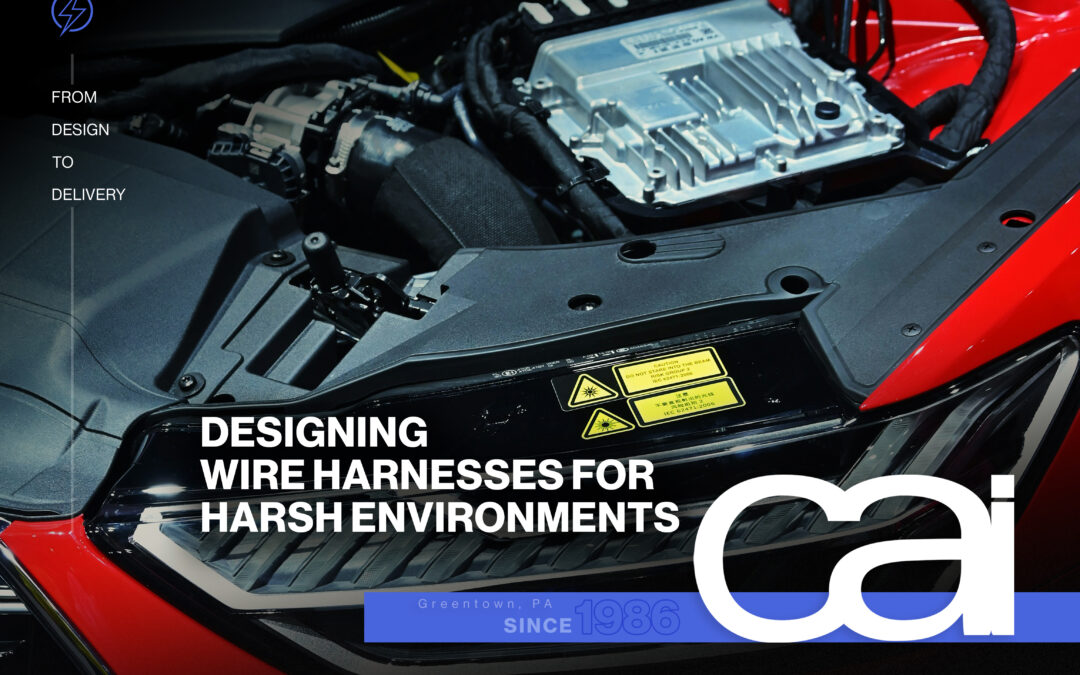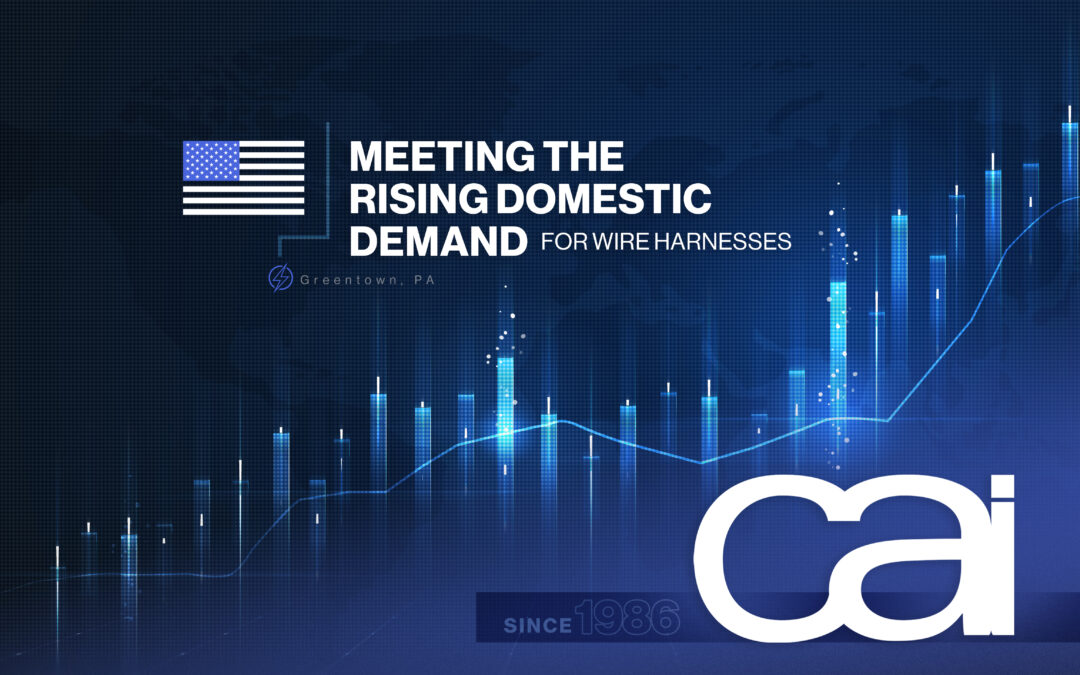A Brief Glossary of Key Electrical Terms
The world of electronics has its own language with a seemingly limitless vocabulary. At times, terminology can be confusing or applied incorrectly, even among those familiar with it. Here we’ll provide definitions for some of the most commonly used terms when working with wires, cables and electricity.
While it helps to know the language, remember that the experts at CAI can help you with your custom wire harness, cable assembly and component projects, no matter how big or small, whether you know the terminology or not.
Alternating Current (AC):
a flow of electrical charge that periodically reverses direction at regular intervals. Homes and businesses rely on AC for their electric power.
American Wire Gauge (AWG):
the American standard of wire and cable diameter designation based on a system of numerical sizes in which the lowest numbers reflect the largest sizes. Each gauge size is 20.6% apart from the next based on cross-sectional area.
Attenuation:
measured in decibels, the weakening of a signal’s strength due to noise, distance or other external factors.
Bandwidth:
the difference between the upper and lower limits of a particular band of frequencies.
Breakout:
a joint where conductors break out from a multi-conductor cable to complete circuits at different points along the main cable. The rest of the conductors continue on within the jacket.
Cable:
a collective group of individual conductors which are insulated separately, then wrapped under a common protective sheath to protect it from environmental threats.
Cable Assembly:
a grouping of cables wrapped in a single insulating sleeve typically constructed with much stronger and durable materials than wire harnesses to endure harsh environmental factors.
Cable Shielding:
a common conductive metallic layer placed around a conductor with the main goal of preventing EMI between internal wires and external fields. Braided, Spiral and Foil are the most common types.
Capacitance:
the ability of a component or circuit to collect and store energy in the form of an electrical charge.
Capacitor:
energy-storing device which consists of two plates of conducting material sandwiched between an insulator made of ceramic, glass or other materials.
Circuit:
a complete circular path through which electricity flows. A simple circuit consists of a current source, conductors and a load. Broken continuity results in an open circuit; when continuity is maintained, it is a closed circuit.
Coaxial Cable:
a cable in which one conductor completely surrounds the other, the two being coaxial and separated by a continuous solid dielectric or by dielectric spacers.
Color Coding:
the use of different colored insulated wires for purposes of identification in a multi-conductor cable.
Composite Cable:
a cable containing more than one gauge size or a variety of circuit types, e.g. pairs, triples, quads, coaxial, and so forth.
Conductor:
a type of metal which offers a low resistance to the passage of electric current and therefore allows for the flow of electricity along it. A conductor usually consists of copper, aluminum, steel, silver, or other materials.
Conduit:
a tube in which electrical wires are housed and protected for many building or structural applications.
Connector:
an intermediate device used for physically connecting two different conductors to create an electrical circuit. They can connect and disconnect by hands or with simple tools without requiring special tools or processes such as soldering.
Crimping:
a joining process which uses pressure to connect wires or a wire and another electrical component like a terminal or contact. It can be performed either by hand using calibrated crimping tools or by automated fixture crimping machines.
Cross Talk:
signal interference caused by cross coupling between nearby conductors producing an unwanted signal in one circuit when a signal is present in the other.
Current:
measured in amperes, the movement of electrons flowing in the same direction along a conductor. Current is proportional to the applied voltage and the material’s resistance.
Dielectric:
insulating material between two conductors which allows electrostatic attraction and repulsion to take place across it. It boosts a capacitor’s charging capacity.
Direct Current (DC):
a flow of electric charge that does not change direction, produced by batteries, fuel cells, rectifiers and generators with commutators.
Drain Wire:
an uninsulated solid or stranded tinned copper wire used in conjunction with a cable shield to ensure effective grounding.
Electromagnetic Field (EMF):
a field produced by stationary or moving electric charges. It can be viewed as the combination of an electric field and a magnetic field. The electric field is produced by stationary charges, and the magnetic field by currents.
Electromagnetic Interference (EMI)
(also, Radio Frequency Interference (RFI): unwanted noise or interference in an electrical path or circuit caused by an electromagnetic field (EMF) from an external source.
Fault Current:
a current that flows through a circuit as a result of a fault, such as compromised insulation.
Field:
the area through which electric and/or magnetic lines of force pass.
Filler:
the material inside multi-conductor cables used to occupy the voids around the conductors and form the cable core into a specific, typically round, shape.
Flex Life:
the measure of the ability of a cable or conductor to withstand repeated flexing.
Frequency:
measured in hertz, the rate at which alternating current reverses itself per second.
Ground:
The connection between an electrical circuit and the earth or other large conducting complete electrical circuit.
Ground Fault:
failed transmission involving insulation to the shield or insulation to the ground wire.
Heat Shrink Tubing:
a versatile, protective thermoplastic layer placed over a wire, cable, connection or component, then shrunk down via a heat gun, hot gas or other heat source.
High Voltage:
a wire or cable with an operating voltage over 600 volts with electrical potential large enough to cause injury or damage.
Impact Strength:
the mechanical punishment a cable can withstand without physical or electrical breakdown, tested by applying a sudden load or force and measuring the amount of mechanical energy absorbed.
Impedance:
measured in ohms, the response of an electric circuit to an alternating current, which is created due to inductance and capacitance.
Induction:
electrical energy produced because of voltage production (electromotive force) due to a changing magnetic field. Induction is found in several applications including inductors, transformers, electric motors and generators.
Insulation:
non-conductive, electrically resistant material used to cover conductors and components and guard against electrical leakage and external threats such as water and extreme temperatures that can lead to corrosion, shorts and electrical failure.
J-Box (also, Junction Box):
an enclosure housing electrical connections to protect them from external threats and people from electric shock.
Jacket:
the outermost layer of a cable whose primary purpose is to help protect the insulation and conductor from environmental threats like moisture, chemicals and extreme temperatures.
Lay:
the length measured along the axis of a wire or cable required for a single strand (in a stranded wire) or conductor (in a cable) to make one revolution around the diameter.
Leakage:
the passage of an electric current outside of its intended path.
Net Loss:
the difference between the attenuation and the gain in any circuit, device, network, or transmission line.
Outgassing:
the percentage of a gas released during the combustion of insulation or jacketing material.
Plenum:
the air return path of a central air system, such as in ductwork or open space above a dropped ceiling. Plenum cables are approved for installation in plenums without the need for conduit.
Overload:
a situation where the current through a wire or circuit exceeds its rated capacity, leading to overheating and the risk of fire or damage.
Overmolding:
a manufacturing process where injection or insert molding or insert molding is used to merge and seal connectors, wires and cables into a single unified piece for added strength, quality and protection.
Pairing:
the union of two insulated single conductors through twisting.
Peak Voltage:
the maximum voltage reached during an alternation of frequency.
Potting:
the process of filling an electronic component or housing with a solid or gelatinous material to enhance endurance and performance.
Power:
a measure of the overall amount of work being done in a system in relation to time (or energy used per second). A watt is the unit of electrical power equal to one ampere under the pressure of one volt.
Printed Circuit Board (PCB):
a thin, flat, rigid, rectangular “blank” board with copper pathways etched into various combined layers — often made of composite material like fiberglass or composite epoxy — to interconnect components.
Printed Circuit Board Assembly (PCBA):
a completed PCB which contains all of the electronic components needed to make the board function as required. PCBAs channel power and data through conductive components, keeping electrical communication flowing along the circuits.
Pulse Cable:
a type of coaxial cable constructed to transmit repeated high voltage pulses without degradation.
Reactance:
the opposition offered to the flow of alternating current by inductance or capacitance of a component or circuit.
Resistance:
measured in ohms (Ω), the restriction of flow of electrical current through a material. All materials, except superconductors, have a resistance above zero. Metals are often used in wiring because they have low resistance which helps transfer the necessary current.
Soldering:
the more traditional method of wire termination which uses a small amount of melted metal alloy (solder) to create a strong, reliable bond between two components, often a wire (or cable) and another electrical component like a terminal or contact.
Splicing:
the mechanical joining between two or more conductors or cables into a single length of conductor or cable including the replacement of insulation and jacket.
Surge:
a sudden, temporary large increase in the voltage or current in an electric circuit or cable.
Temperature Rating:
the maximum and minimum temperature at which an insulating material may be used without loss of its basic properties.
Tensile Strength:
the maximum lengthwise stretching force that a cable can withstand without breaking.
Thermoplastic:
any plastic polymer material that becomes pliable at a certain high temperature and solidifies when cooled.
Thermoset:
a material which hardens or sets by heat, chemical or radiation cross-linking techniques and which, once set, cannot be re-softened by heating.
Terminal:
a type of connection used at the point where a conductor comes to an end (e.g. fixed post, stud, chassis, or another tongue), typically closing a circuit. It also can refer to the endpoint itself. All terminals are connectors, but not all connectors are terminals.
Triaxial Cable:
a cable construction having three coincident axes all insulated from one another.
Voltage:
measured in volts (V), potential energy between two points per unit of charge.
Voltage Rating:
the highest voltage that may be continuously applied to a wire to conform with standards or specifications.
Watt:
a unit of electric power required to do work at the rate of one joule per second.
Welding:
a fabrication process by which two parts (typically metal or thermoplastic) are joined together through heat, pressure or both forming a joint as the parts cool.
Wire:
a strand or multiple strands of a conductive material (conductor) such as copper or aluminum and covered, either bare or covered in plastic or rubber for protection and insulation.
Wire Drawing:
a metalworking process that reduces the cross section of a wire by pulling it through a series of dies.
Wire Harness:
an arrangement of insulated wires, usually with several breakouts, bound together with a rubber or plastic sheath and used to interconnect an electric circuit.
Yield Strength:
the minimum stress at which a material will begin to physically deform.
For more information on customizing your own wire harnesses or molded cable assemblies, contact CAI today.
For expert help bringing your electrical products , get in touch with the experts at CAI.





